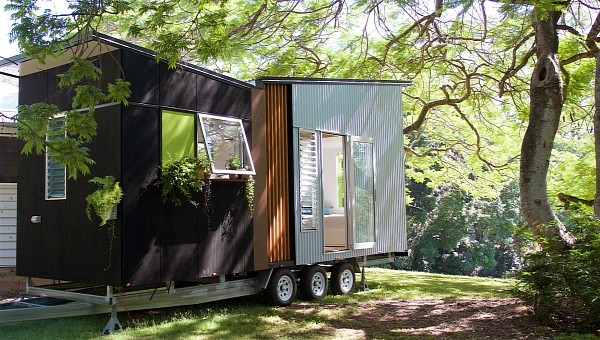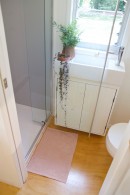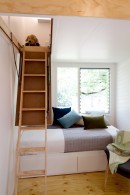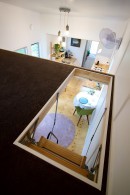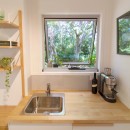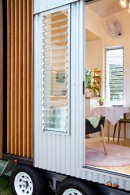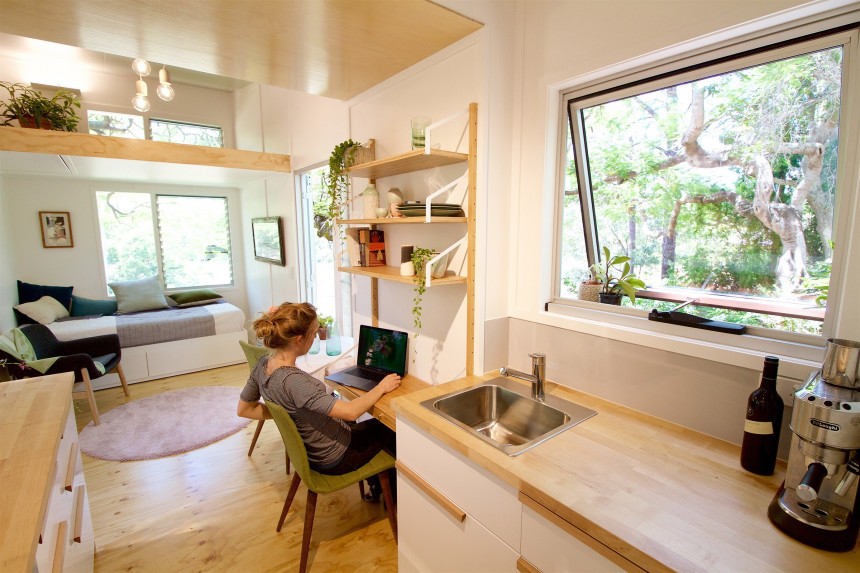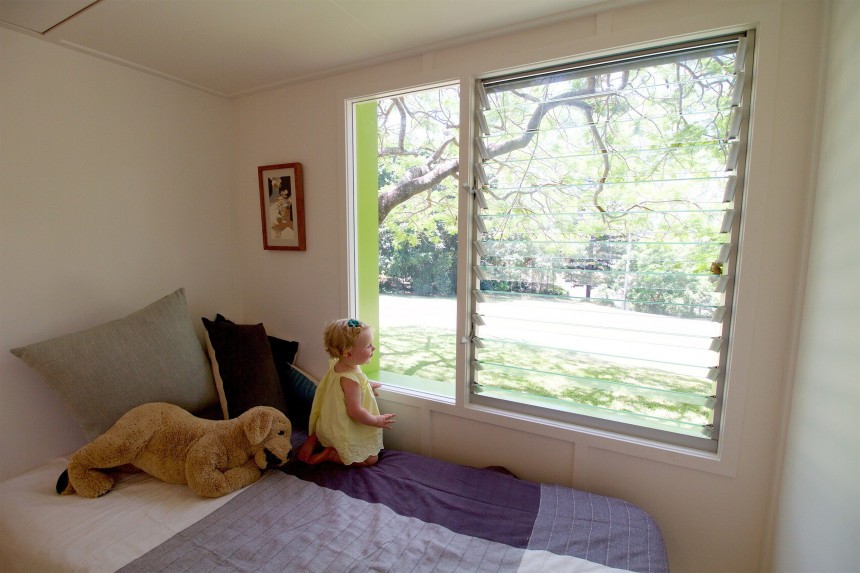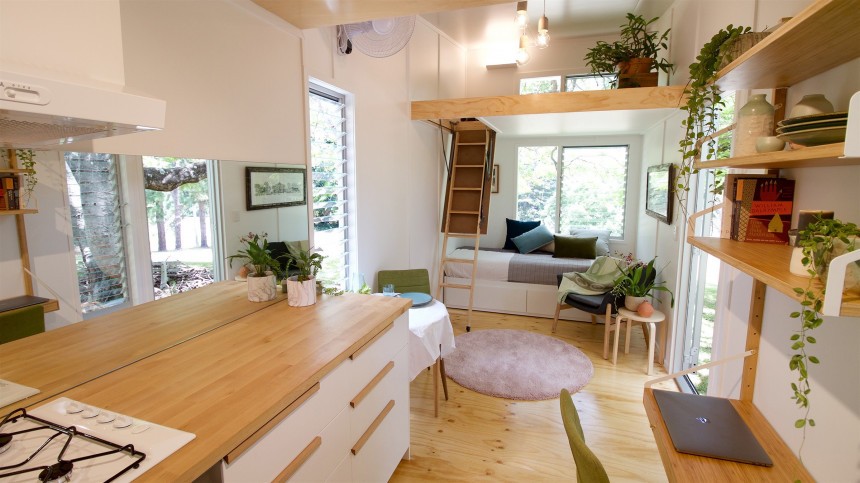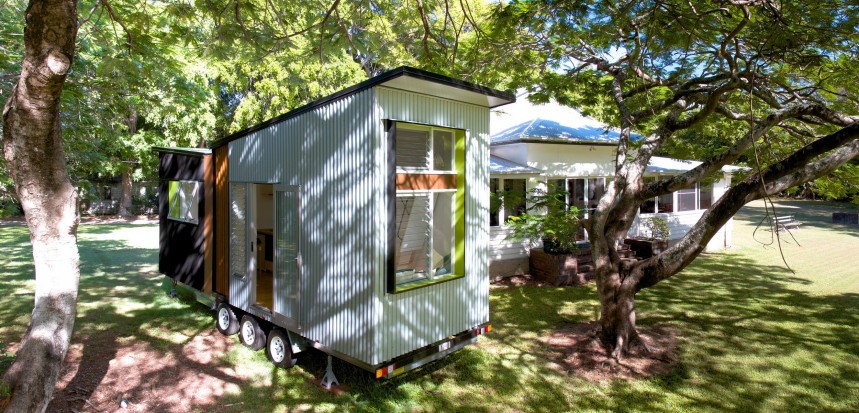While tiny living continues to expand all over the world, certain designs have become, if not iconic, at least classic. The Australian Swallowtail deserves wide recognition for its masterful combination of timeless, highly flexible design with a rugger, durable construction. Beyond the gimmicks or purely decorative innovations of some newer tiny houses, the Swallowtail reminds us of what made tiny living so popular in the first place.
There once was a passionate, young team of architects and carpenters who were all eager to create amazing tiny homes, from scratch. Sadly, Lara Nobel, Greg Thornton, and Andrew Carter have parted ways in the meantime, but The Tiny House Company will be remembered for its innovative, top-quality building projects, including homes on wheels.
The Swallowtail has become a classic by now, although it would probably be better described as timeless. There’s nothing dated about its fresh, airy interior, but it also exudes that friendly, cheerful atmosphere that’s lacking in some futuristic designs.
First of all, this eye-catching home was designed in harmony with the environment it’s intended for, and with nature. Australian tiny homes face certain challenges weather-wise, such as extreme heat or powerful winds.
This 7.2-meter-long (23.6 feet) tiny maintains an optimal temperature inside at all times, and is protected against water and wind. Its builders made sure to insulate its roof and walls properly, and to use durable cladding that would make it water-tight. As for wind resistance, the Swallowtail is rated to Australian Wind Classification C2 (cyclonic) – she may be tiny, but mighty.
While designed to stay dry on the inside, this practical home also easily collects water. The name “Swallowtail” was inspired by its butterfly roof, featuring an integrated box gutter and downpipe, elegantly hidden behind a screen made of Paulownia timber. This is what harmony with nature means – efficient protection against the elements, and a clever use of resources.
In addition to the butterfly roof, the various textures and colors of the natural materials that were used for the exterior also make the Swallowtail a memorable design. Its large windows and glass doors also make an impact.
The type of windows, the height, and the placement were all carefully selected to optimize the space. They play an aesthetic role (by providing generous views for the living areas) but also ensure proper cross-ventilation.
Since tiny homes have wheels so that they can move around, freedom should also be reflected in their interiors. The Swallowtail was particularly designed for continuous growth. Not in dimensions, but amenity-wise. Each element, from the layout to the doors and windows, was designed to allow future modifications and additions. A balanced home can’t stay the same forever, it needs to adapt to the changes within the family, over time.
Thanks to the versatile ground floor living area and the loft above it, the Swallowtail can be configured by its owners in multiple ways. Some might prefer a loft bedroom and a ground-floor lounge, while others might want to have a downstairs bedroom, and a storage area above.
Versatility is amplified by the integration of a ladder instead of a bulky staircase. The ladder literally takes no space at all, because it “disappears” into the ceiling when it’s not being used.
The kitchen area is also more flexible than most. There’s enough space for both a dining table and a desk, without the use of modular furniture or breakfast bars, and that says a lot. The countertop can be used just for preparing meals, while a beautiful table sits between the kitchen and the living area, perfect for enjoying family meals.
The foldable desk is seamlessly integrated, as part of the kitchen’s storage area with delicate shelves. Although fitted with all the basics, the kitchen was also designed to allow expansion over time, whenever the owners can afford to add things or to change things up.
Another ingenious feature is the optional full-width, mirror-glass backsplash. By reflecting the kitchen window on the opposite side it instantly makes the space feel bigger and brighter. The deep-framed window at the end of the house has a similar effect, while also bringing enough natural light for the living area/bedroom.
The bathroom sits discretely at the other end of the house, and is large enough for the basics, including a shower with a glass screen.
Built on a custom-made trailer, the Swallowtail was designed to be further beautified and expanded with additions such as a deck, a planter box, and awnings. The living area space was intentionally kept uncluttered, so that owners could add appliances and decorative items, to their liking.
Extra furniture or more expensive options could also be integrated over time, without hassle. And the house itself was meant to easily go from a residential dwelling to a rental home or a mobile office, if needed.
With the original team no longer working together, the Swallowtail has also stayed in the past. But its truly ingenious, perfectly balanced design will always be an inspiration for sustainable, functional tiny living.
The Swallowtail has become a classic by now, although it would probably be better described as timeless. There’s nothing dated about its fresh, airy interior, but it also exudes that friendly, cheerful atmosphere that’s lacking in some futuristic designs.
First of all, this eye-catching home was designed in harmony with the environment it’s intended for, and with nature. Australian tiny homes face certain challenges weather-wise, such as extreme heat or powerful winds.
While designed to stay dry on the inside, this practical home also easily collects water. The name “Swallowtail” was inspired by its butterfly roof, featuring an integrated box gutter and downpipe, elegantly hidden behind a screen made of Paulownia timber. This is what harmony with nature means – efficient protection against the elements, and a clever use of resources.
In addition to the butterfly roof, the various textures and colors of the natural materials that were used for the exterior also make the Swallowtail a memorable design. Its large windows and glass doors also make an impact.
The type of windows, the height, and the placement were all carefully selected to optimize the space. They play an aesthetic role (by providing generous views for the living areas) but also ensure proper cross-ventilation.
Thanks to the versatile ground floor living area and the loft above it, the Swallowtail can be configured by its owners in multiple ways. Some might prefer a loft bedroom and a ground-floor lounge, while others might want to have a downstairs bedroom, and a storage area above.
Versatility is amplified by the integration of a ladder instead of a bulky staircase. The ladder literally takes no space at all, because it “disappears” into the ceiling when it’s not being used.
The foldable desk is seamlessly integrated, as part of the kitchen’s storage area with delicate shelves. Although fitted with all the basics, the kitchen was also designed to allow expansion over time, whenever the owners can afford to add things or to change things up.
Another ingenious feature is the optional full-width, mirror-glass backsplash. By reflecting the kitchen window on the opposite side it instantly makes the space feel bigger and brighter. The deep-framed window at the end of the house has a similar effect, while also bringing enough natural light for the living area/bedroom.
The bathroom sits discretely at the other end of the house, and is large enough for the basics, including a shower with a glass screen.
Extra furniture or more expensive options could also be integrated over time, without hassle. And the house itself was meant to easily go from a residential dwelling to a rental home or a mobile office, if needed.
With the original team no longer working together, the Swallowtail has also stayed in the past. But its truly ingenious, perfectly balanced design will always be an inspiration for sustainable, functional tiny living.
